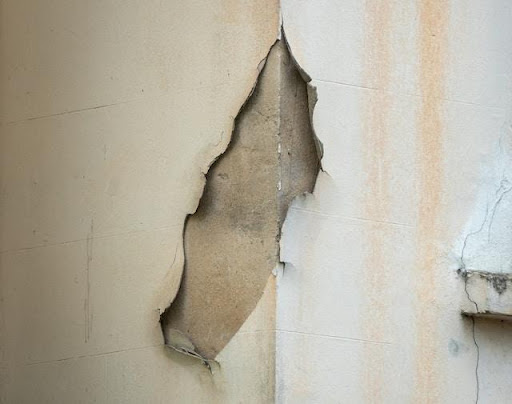
Hidden leaks in your home are one of the most difficult plumbing issues. Although you can see the signs of the leak within your house – may be due to the home’s higher water bills – you do not know the location.
If you can’t pinpoint the location of a leak, it is impossible to fix it. Meanwhile, as you are trying to figure out the problem, the damage to your home just continues. In this post, Central Florida Property Management explains a step-by-step process for finding leaks inside the walls of your home.
Signs of water leak inside a wall
These are the signs you should expect to see if there is a water leak inside one of the walls of the house:
Puddles near a wall
Leaks can appear as small puddles at the base of a wall (be sure the water is not from an open or leaky window). You may also find that an area of carpet is always damp for no reason. You may notice wet flooring behind a water-utilizing appliance or near a bathroom sink.
Discolored walls
If water is being discharged into a wall section, it will have a different color from the rest of the walls in your home. The area may have a washed-out look or appear lighter than its surroundings. Leaks may also leave dark watermarks on walls.

Water from a leak will alter the texture of wall paint and wallpaper. Bubbles will appear under the layer of paint and sections of the wallpaper can start to droop.
Damaged paint or wallpaper
Water from a leak will alter the texture of wall paint and wallpaper. Bubbles will appear under the layer of paint and sections of the wallpaper can start to droop. You may also expect the drywall in that area to sag.
Mold and mildew
Clusters of mold and mildew will grow on any wall where there is a hidden leak. Even if none of the other signs is present, if mold is growing on a wall, you may suspect a leak. Mold will only grow in places where it has access to water.
Musty odors
If there is a leak behind your walls, chances are that the water will not dry out. Walls that are always wet will have a musty, humid odor. If mold is growing in the area, it can also contribute to bad odors.
Dripping sounds
In the first few seconds of turning off a shower or faucet and flushing a toilet, you may hear faint dripping inside a nearby wall. This sound is often louder if the home has PVC pipes. Metal pipes, on the other hand, may deaden the sound.
Pinpointing the leak location
There are three possible causes of water leaks inside the walls of a house. The most common one is damaged plumbing.
Finding defective plumbing inside a wall
To determine if the leak inside the wall is caused by a broken pipe, turn off all faucets and water-utilizing appliances in the home. Check your water meter to note its reading. Wait 3 hours and check the water meter again. If the reading has changed, your plumbing is leaking. To pinpoint the exact location of the leak, you have three options:
Use a moisture meter
This tool measures the moisture content of materials. For drywall, concrete, and masonry, the reading should be less than 1%. Scan the walls in your home to find any place where the reading is higher than normal.
Use an infrared camera
An infrared camera will detect the heat coming from your walls. You can use the temperature variations for different sections of the walls to pinpoint the location of a leak.
Cut into the drywall:
This method is invasive and should only be used as a last resort. Before you cut into your drywall, remember that the signs of a leak often occur far away from the location of the leak.

If the home’s plumbing is not leaking, you may want to ensure that water is not seeping into the walls of your home from the roof.
Inspect your gutters, eaves and downspouts
Clogged eaves and downspouts or damaged roof gutters can leak water into the walls of your home. If the home’s plumbing is not leaking, you may want to ensure that water is not seeping into the walls of your home from the roof. If the eaves, gutters and downspout are clogged, cleaning them should take care of the leak.
Check your home’s foundation
Water can seep into the walls of your home through the foundation walls. If rainwater is allowed to pool at the base of the house because the soil around the home does not slope away from the building, you may have this problem. Solving this drainage issue will usually stop the leak inside your home.
To conclude, a leak inside the walls of your home is not something you should ignore. Given enough time, this problem can do massive damage to the structures of your home. Finding the source of the leak and dealing with it is of utmost importance.
If you have trouble finding the leak yourself, do not hesitate to talk to a professional leak detection service. Also, if the leak is caused by a damaged pipe, do not try to fix it yourself; you could make the problem worse. Talk to a local plumber.